When we think of dogs, we often imagine loyal companions that grow old with us, sharing a lifetime of memories. But some breeds, while equally lovable, have a much shorter time to make an impression. These rare and unique dogs, though their time with us may be brief, leave a lasting mark on our hearts.
From the charming to the mighty, these breeds offer something truly extraordinary. They come with fascinating histories, captivating traits, and personalities that steal the show.
Sadly, their short lifespans can be heartbreaking, but their intense, affectionate nature makes every moment with them unforgettable.
Imagine a dog so special, its time with you becomes a beautiful whirlwind of adventure and love.
If you’re curious about these fleeting yet magnificent creatures, read on to discover the 7 rare breeds that will take your breath away—before they take their final bow.
Rare and Unique Short-Lifespan Dog Breeds
1. Spinone Italiano

The Spinone Italiano is a rare breed known for its loyal nature and impressive hunting abilities. Originating from Italy, this medium to large breed has a short lifespan, often living between 10 to 12 years.
WebMD explains that while its life expectancy is typical for its size, Spinones are prone to specific health concerns like hip and elbow dysplasia, which can affect their mobility and overall longevity.
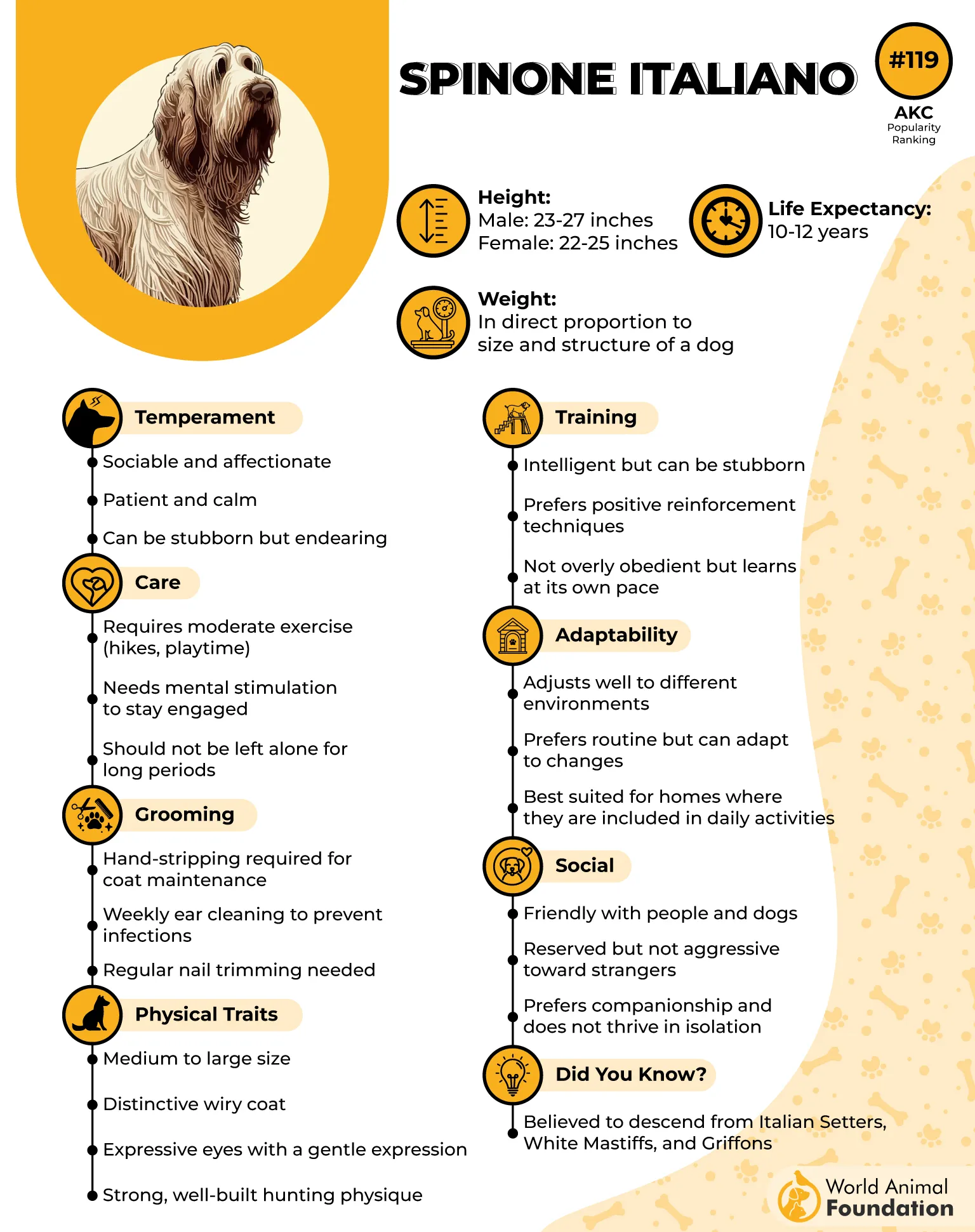
Despite their rarity outside of Europe, the Spinone’s distinctive coat and calm demeanor make it a highly sought-after companion for those in the know.
When it comes to care, the Spinone requires regular exercise and a well-balanced diet to stay healthy. Due to their hunting background, they are energetic and need ample space to roam. Regular grooming is essential to maintain their wiry coat, but they are generally low-shedding.
Warning Signs of Early Health Decline:
-
Difficulty moving or reluctance to exercise
-
Unexplained weight loss
-
Lethargy or unusual behavior changes
How to Promote Longevity:
-
Consistent physical activity and mental stimulation
-
Regular vet check-ups for early detection of joint issues
-
A balanced diet rich in Omega-3s to support joint health
2. Neapolitan Mastiff
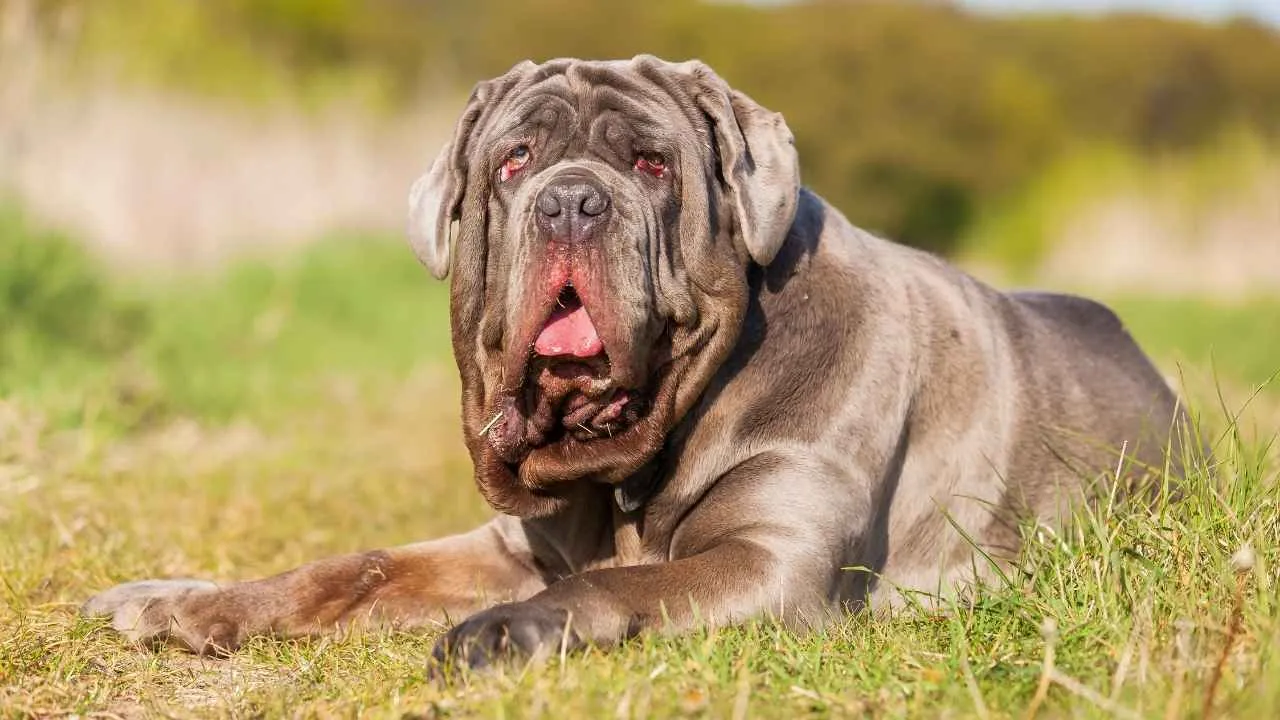
The Neapolitan Mastiff is an awe-inspiring breed that demands attention with its massive size and protective nature.
With a life expectancy of around 7 to 9 years, this giant’s lifespan is on the shorter side, likely due to its large frame and genetic predispositions to conditions like heart disease and hip dysplasia.

Originating from Italy, these dogs were originally bred for guarding, making them both a loving family companion and a formidable protector.
These dogs need plenty of care, with a diet that supports their large size and ensures they stay healthy as they age.
The Neapolitan Mastiff thrives on structured exercise, though it’s important not to overdo it due to their susceptibility to joint issues. They require regular grooming to keep their folds clean and prevent skin infections.
Warning Signs of Early Health Decline:
-
Excessive panting or difficulty breathing
-
Lethargy and reluctance to move
-
Persistent limping or joint stiffness
How to Promote Longevity:
-
A controlled diet to prevent obesity
-
Moderate, gentle exercise to avoid strain on joints
-
Regular cleaning of their folds to prevent infections
3. Belgian Laekenois
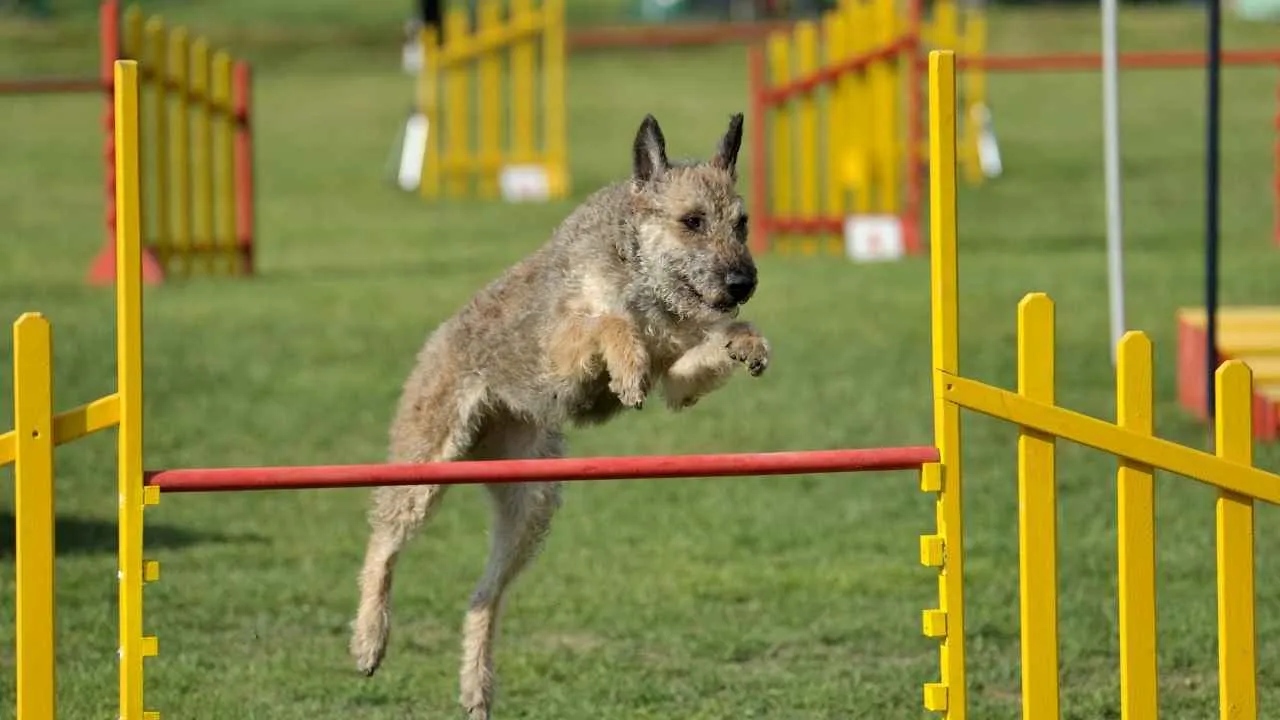
A rare and lesser-known member of the Belgian Shepherd family, the Belgian Laekenois is a hard-working and intelligent breed with a lifespan ranging from 12 to 14 years.
Known for its herding instincts, this medium-sized dog tends to be rare outside of Europe and is often found in roles such as working with police or military due to its sharp mind and devotion.

Their shorter lifespan, compared to other herding breeds, can be attributed to health issues like hip dysplasia and certain autoimmune conditions.
Caring for a Belgian Laekenois involves providing consistent mental stimulation through tasks and training, as these dogs excel in problem-solving. A balanced diet rich in protein and fats is essential to maintain their energy levels. Regular grooming is also necessary due to their dense, wiry coat.
Warning Signs of Early Health Decline:
-
Reduced energy or enthusiasm for work
-
Unexplained skin conditions or hair loss
-
Difficulty moving or favoring one leg
How to Promote Longevity:
-
Daily mental and physical stimulation
-
A high-quality diet with lean proteins
-
Regular vet visits to monitor for autoimmune issues
4. Presa Canario
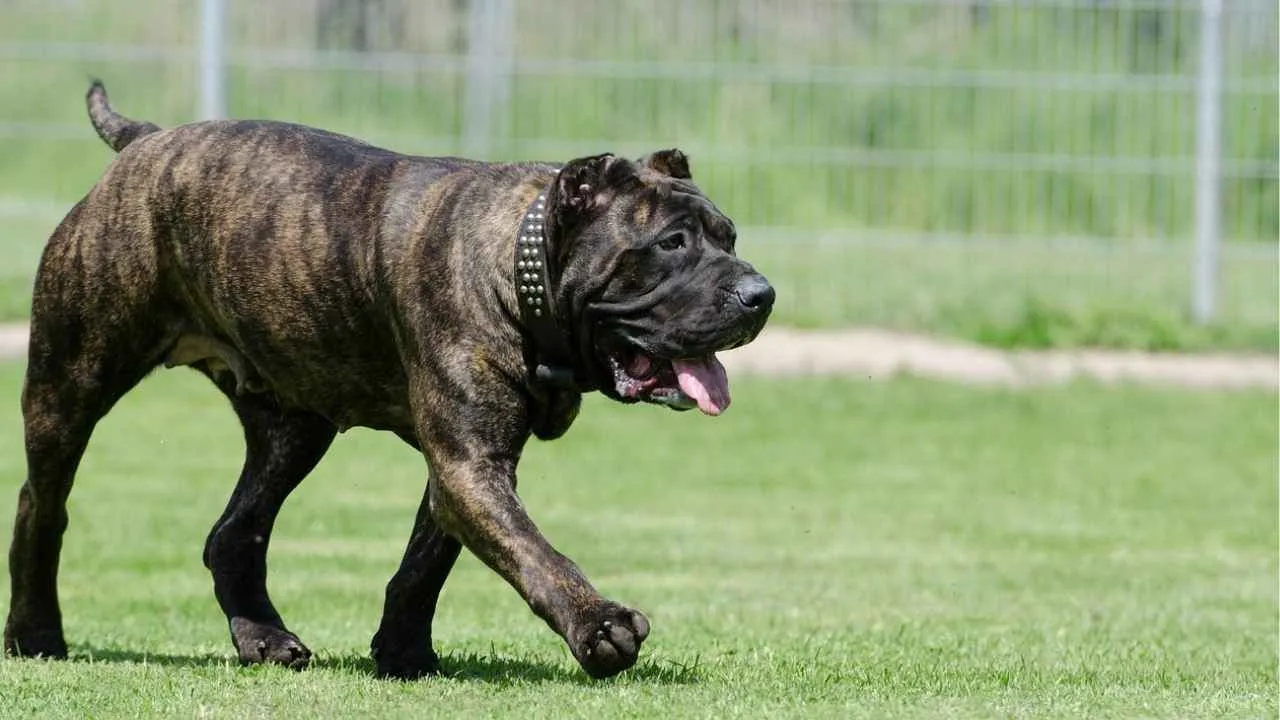
The Presa Canario is a rare and imposing breed with a strong, muscular build, originally from the Canary Islands. This breed typically has a lifespan of 9 to 11 years, though their health is often affected by their size, with common issues including hip dysplasia and heart conditions.
Known for their protective and sometimes aloof nature, they are excellent guardians but require proper training and socialization. Their rarity in many regions makes them highly sought after by experienced dog owners.

PetMD ensures that diet and care are essential to managing their weight and muscle mass. The Presa Canario benefits from a protein-rich diet to support its lean, muscular frame. Consistent exercise helps keep them in good shape, but it’s important to avoid overexertion, especially in hot weather.
Warning Signs of Early Health Decline:
-
Difficulty breathing or excessive panting
-
Discomfort when standing or walking
-
Unexpected aggression or nervous behavior
How to Promote Longevity:
-
Proper weight management through diet and exercise
-
Regular vet check-ups to catch any early signs of heart disease
-
Positive reinforcement-based training for mental health
5. American English Coonhound

The American English Coonhound is a rare hunting dog, with a lifespan of 10 to 12 years. While not as commonly seen as other hound breeds, this dog has a deep-rooted history as a tracker, particularly in the southern United States.
Their health is generally robust, though they may suffer from issues like ear infections or hip dysplasia, which is common among active breeds. The American English Coonhound’s rarity comes from its specific role in hunting, making it less popular as a family pet in urban settings.
AKC claims that diet and exercise are crucial for this active breed. They thrive on consistent, outdoor exercise, and a diet rich in lean meats and vegetables supports their stamina and health. Regular ear cleaning is also important to prevent infections, which are common in breeds with floppy ears.
Warning Signs of Early Health Decline:
-
Excessive scratching or shaking of the head
-
Noticeable weight loss or lethargy
-
Difficulty walking or avoiding movement
How to Promote Longevity:
-
Frequent outdoor activities and hunting or scenting exercises
-
A healthy, protein-rich diet to maintain energy levels
-
Regular vet visits to monitor ear health
6. Leonberger

The Leonberger is an awe-inspiring giant, originating from Germany and known for its massive size and gentle nature. This breed typically lives 7 to 9 years, a shorter lifespan due to its large size and susceptibility to conditions like bloat and heart disease.
Originally bred as a working dog, the Leonberger’s rarity stems from its unique combination of size, intelligence, and friendly disposition, making it less common as a family pet.
Maintaining the Leonberger’s health involves a carefully planned diet rich in proteins and healthy fats to support its large body.
They need moderate exercise, but care must be taken to avoid over-exertion due to their tendency to develop joint and heart issues. Regular grooming is essential to manage their thick, double coat.
Warning Signs of Early Health Decline:
-
Labored breathing or coughing
-
Difficulty standing or walking
-
Swollen abdomen or signs of discomfort
How to Promote Longevity:
-
Controlled exercise to avoid stress on joints
-
Balanced meals with supplements for joint health
-
Regular vet check-ups for early detection of heart conditions
7. Kuvasz
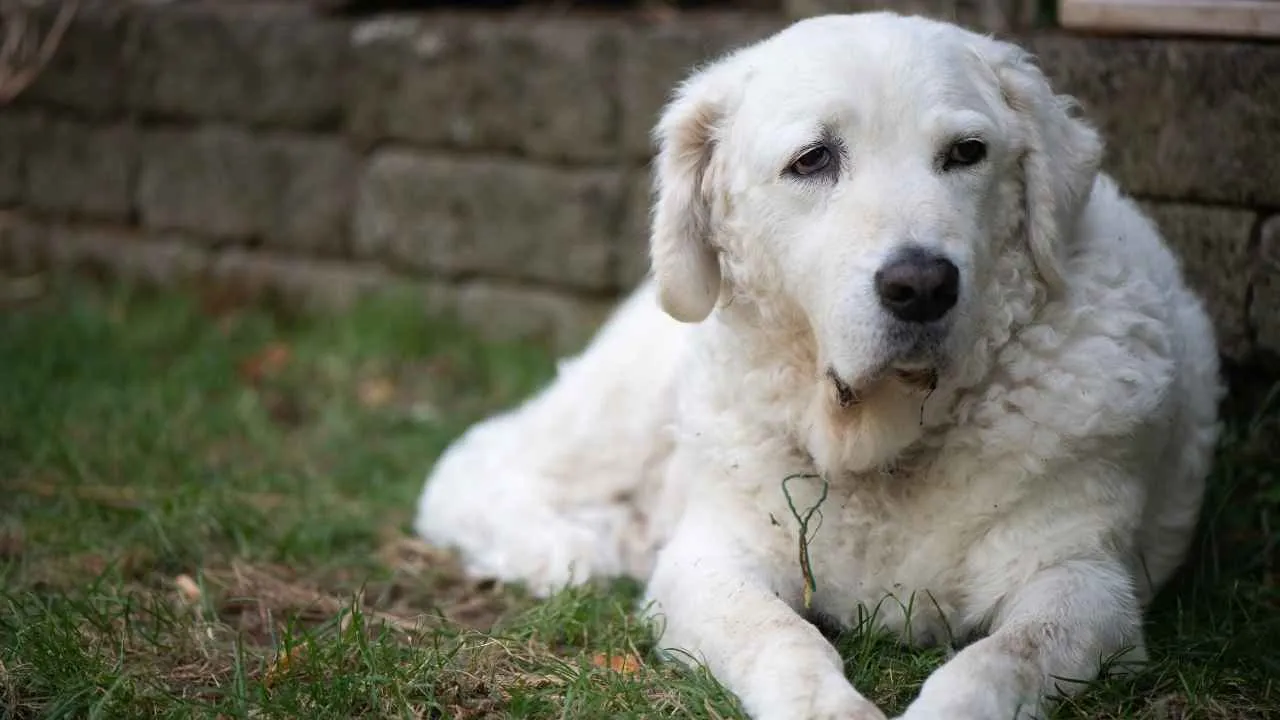
The Kuvasz is a majestic, rare breed known for its protective instincts and independent nature. With a lifespan of around 10 to 12 years, this large, white shepherd dog is often susceptible to conditions like hip dysplasia and bloat.
Originating from Hungary, the Kuvasz was historically used for guarding livestock, making it a highly capable, yet rare, breed for modern families.
Diet and exercise are essential for the Kuvasz, especially since it’s prone to obesity if not carefully managed. Their diet should be protein-focused and balanced to support their active lifestyle. Regular grooming is also required, as their thick, white coat can become matted without proper care.
Warning Signs of Early Health Decline:
-
Excessive drooling or trouble breathing
-
Loss of appetite or unexplained weight changes
-
Reluctance to move or signs of pain
How to Promote Longevity:
-
Regular mental and physical challenges to maintain activity levels
-
A high-protein, low-fat diet to maintain a healthy weight
-
Consistent vet visits to monitor joint health and prevent bloat
FAQs
Are large and giant dog breeds more likely to live shorter lives?
Yes, larger dogs and giant breeds like the Saint Bernard and Great Dane tend to have shorter lifespans. Their size often leads to increased risks of health problems such as bone cancer, joint issues, and heart conditions, which can reduce their overall life expectancy.
Are short-lifespan breeds always unhealthy?
Not necessarily. While some rare dog breeds have shorter lifespans due to their size or genetic factors, they can still be healthy dogs with proper care. Their shorter lives are often a result of natural aging processes rather than constant health problems, especially when well-cared for.
How can owners of short-lifespan breeds help them live longer?
Owners can promote longevity by providing a healthy diet, regular exercise, and routine vet check-ups. Keeping their weight in check, preventing joint problems, and managing stress levels can significantly improve their quality of life, even with a shorter lifespan.
Conclusion
Rare dog breeds like the Spinone Italiano and Neapolitan Mastiff may have short lifespans, but their love and loyalty leave lasting memories. Whether you’re drawn to larger dogs like the Leonberger or smaller dogs like the Cavalier King Charles Spaniel, these pups bring joy in their own special way.
Proper care, a healthy diet, and daily exercise are key to ensuring these majestic dogs live their best lives. Despite their shorter time with us, they make a huge impact, and reputable breeders are crucial in preserving their health.
Ready to welcome one of these lovable giant or smaller dog breeds into your life? Keep learning and follow us for more on these incredible breeds!


